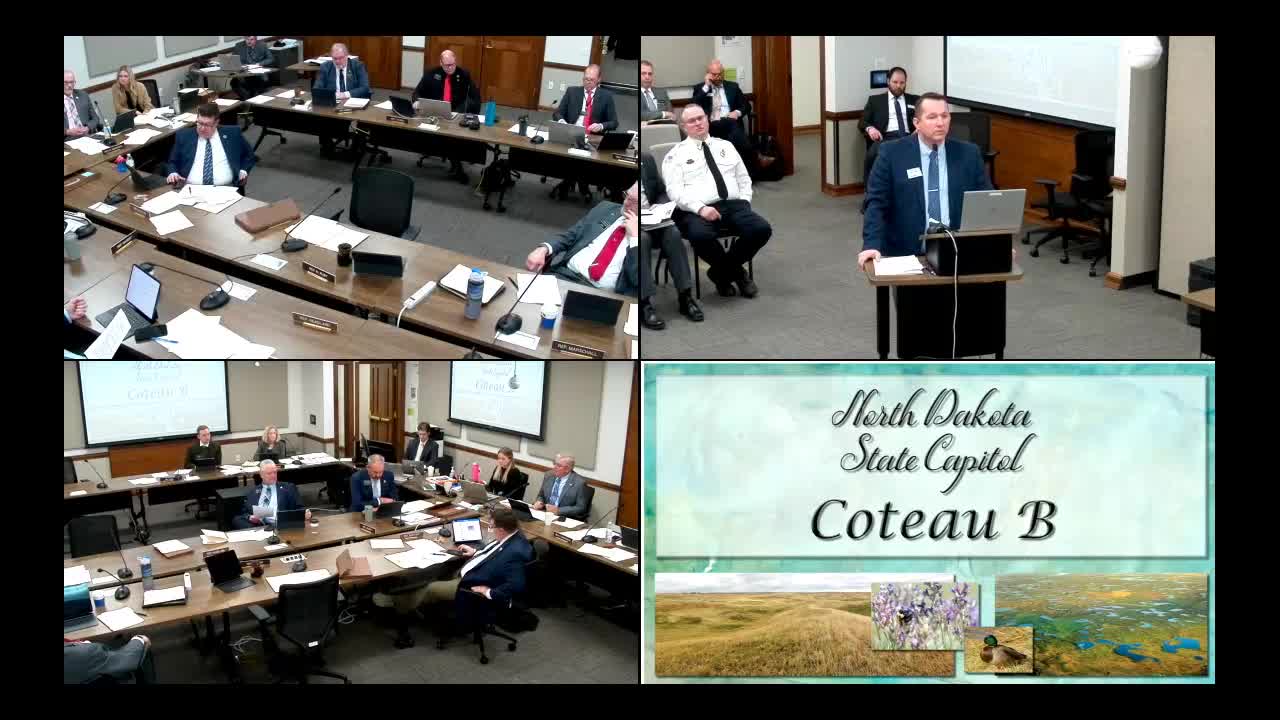Electric cooperatives address wildfire claims and insurance challenges
March 20, 2025 | Energy and Natural Resources, House of Representatives, Legislative, North Dakota
This article was created by AI summarizing key points discussed. AI makes mistakes, so for full details and context, please refer to the video of the full meeting. Please report any errors so we can fix them. Report an error »

In a recent meeting of the North Dakota House Energy and Natural Resources Committee, discussions centered on the pressing issue of wildfire mitigation and the challenges faced by electrical cooperatives in managing risks associated with wildfires. As the threat of wildfires looms larger, particularly in areas prone to high winds and drought, utility representatives outlined their proactive strategies to prevent damage and ensure safety.
The meeting highlighted the importance of monitoring weather conditions and implementing specific protocols when wind speeds reach critical levels. Utility companies have adopted measures such as vegetation management and routine pole testing, alongside transitioning from overhead to underground power lines to reduce vulnerability. These efforts are part of a broader commitment to mitigate risks, although representatives acknowledged that not every situation can be fully controlled.
A significant point of discussion was the process of handling claims related to wildfire damages. While many cases are settled out of court, the representatives emphasized that utilities are generally willing to pay claims when responsibility is established. However, the increasing difficulty in obtaining insurance coverage for wildfire-related incidents poses a growing concern. As catastrophic wildfire claims rise, insurers are becoming more hesitant to provide liability protection, which could ultimately impact the affordability of power for consumers.
The committee members listened intently as the representatives explained that the financial burden of claims may eventually fall on cooperative members through increased premiums. This situation raises questions about the sustainability of electric cooperatives in the face of escalating wildfire risks and insurance challenges.
As the meeting concluded, the urgency of addressing these issues was palpable. The discussions underscored the need for continued innovation and collaboration among utilities, regulators, and communities to navigate the complexities of wildfire management and ensure reliable energy for North Dakota residents.
The meeting highlighted the importance of monitoring weather conditions and implementing specific protocols when wind speeds reach critical levels. Utility companies have adopted measures such as vegetation management and routine pole testing, alongside transitioning from overhead to underground power lines to reduce vulnerability. These efforts are part of a broader commitment to mitigate risks, although representatives acknowledged that not every situation can be fully controlled.
A significant point of discussion was the process of handling claims related to wildfire damages. While many cases are settled out of court, the representatives emphasized that utilities are generally willing to pay claims when responsibility is established. However, the increasing difficulty in obtaining insurance coverage for wildfire-related incidents poses a growing concern. As catastrophic wildfire claims rise, insurers are becoming more hesitant to provide liability protection, which could ultimately impact the affordability of power for consumers.
The committee members listened intently as the representatives explained that the financial burden of claims may eventually fall on cooperative members through increased premiums. This situation raises questions about the sustainability of electric cooperatives in the face of escalating wildfire risks and insurance challenges.
As the meeting concluded, the urgency of addressing these issues was palpable. The discussions underscored the need for continued innovation and collaboration among utilities, regulators, and communities to navigate the complexities of wildfire management and ensure reliable energy for North Dakota residents.
View full meeting
This article is based on a recent meeting—watch the full video and explore the complete transcript for deeper insights into the discussion.
View full meeting
